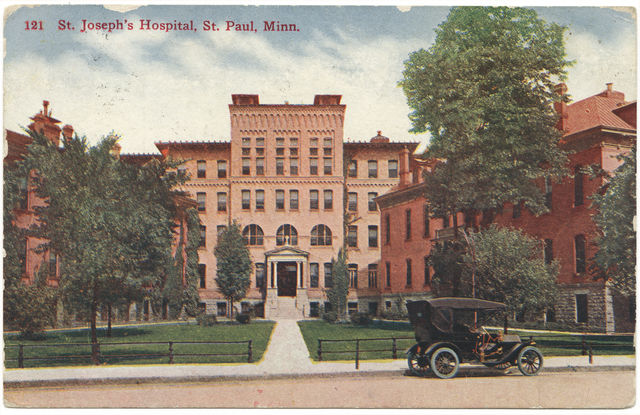Mary Hall: A Saint Paul Legacy, Renewed for the Future
- jacki3088
- Mar 5
- 3 min read
Updated: 4 days ago

For almost 100 years, the St. Joseph’s Hospital Nurses Home—now called Mary Hall—has stood on the northwest edge of downtown Saint Paul. Built in 1926, this red-brick building has been a place of learning, care, and shelter, changing over time to meet the needs of the community.
It started as a home and training center for nurses, then became a refuge for people in need. It has always been a place where people could find hope and a fresh start. Now, as it goes through another change, it’s still doing what it was meant to do—providing stability and support for those who need it most.
A Home for Healers: Mary Hall’s Early Years
Mary Hall’s story begins at a time when nursing was becoming a professional and respected career for women. In the early 1900s, hospitals were growing fast, and they needed trained medical staff.

At St. Joseph’s Hospital, the Sisters of St. Joseph of Carondelet had been caring for patients since 1854, making it Minnesota’s first hospital. By the 1920s, they needed a dedicated space for their nursing students.
Architect John Wheeler designed the St. Joseph’s Nurses Home, which opened in 1926. The five-story brick building was built to last, with large windows for natural light, strong terrazzo floors, and spacious classrooms. The carved stone entrance, detailed woodwork, and bright sunrooms gave the place a sense of purpose and pride.
Inside, more than 190 student nurses lived in single rooms. Many came from working-class families, trading long hospital shifts for an education and a place to stay. At a time when women had few career options, this building provided them a path forward.
For nearly 20 years, this building was a center of learning, preparing generations of nurses for work that would change lives.

A Shift in Purpose: Adapting to New Needs
By 1945, medical education was changing. Nursing programs were moving from hospitals to colleges, and St. Joseph’s Nursing School merged with St. Catherine’s University. The training program moved, but the building stayed. For decades, it housed nurses, hospital staff, and Sisters of St. Joseph.
By the late 1970s, Saint Paul’s unhoused population was growing, and Catholic Charities saw a chance to put the building to good use. In 1979, Mary Hall opened as a winter shelter for men experiencing homelessness, providing them a safe place to stay during the coldest months. By 1990, Catholic Charities fully took over the building, expanding its mission to include permanent supportive housing and a 25-bed emergency shelter.
For nearly 30 years, Mary Hall was a lifeline for people facing homelessness, offering stability, support, and a way forward. But by 2019, the building needed major updated to keep serving its purpose. It temporarily closed, and its future was uncertain.
Overcoming Challenges: A New Vision for Mary Hall
In 2023, nonprofit developer Aeon stepped in with a plan to bring Mary Hall back to life, making sure it could keep helping Saint Paul’s most vulnerable for years to come. With $20 million in funding, the building will be transformed into 88 permanent housing units for:
Single adults transitioning out of homelessness.
Veterans in need of stable housing.
Young adults (18-24) starting out on their own.
But it’s more than just a place to live. The new Mary Hall will offer:
On-site support to help residents find jobs and access mental health care.
Community spaces to build connections and stability.
Modern updates while keeping its historic charm.
Some neighbors were worried at first about concentrated poverty in the area. But after conversations and collaboration, the project moved forward, reaffirming Saint Paul’s commitment to housing that includes everyone.
Honoring the Past, Building the Future
Mary Hall has always been more than just a building. It has been:
A home for young women learning to heal.
A shelter for those needing warmth and safety.
A community space that adapts to meet each generation’s needs.

Now, with Aeon leading the way with support from Rethos Historic Rehab loan program, its legacy continues - offering care, stability, and opportunity.
As Saint Paul grows, Mary Hall stands as a reminder that historic places don’t have to fade away. They can change, thrive, and keep serving the people who need them most.
For those who will soon call it home, it’s more than just a place to live. It’s a chance to rebuild, find community, and step into a future filled with hope.
Learn more about Rethos Historic Rehab Loans: https://www.rethos.org/historic-rehab-loans

Comments